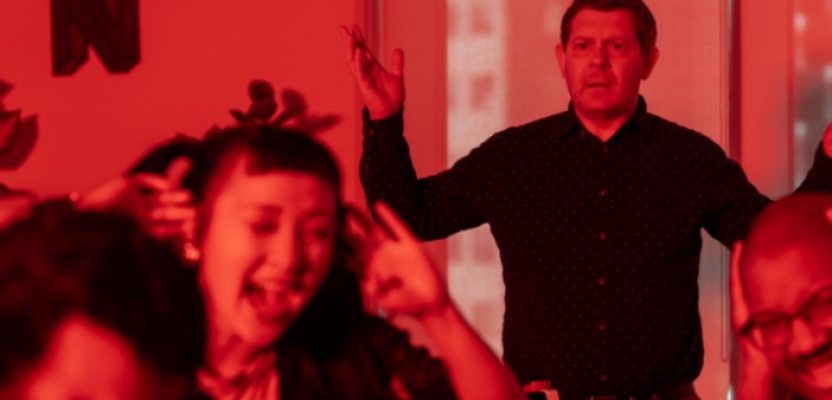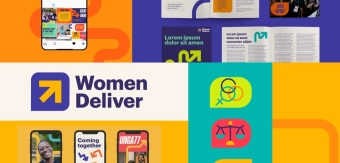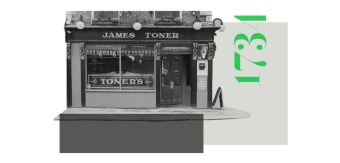What’s the obvious answer when putting together a campaign for an online education company? Create a four-part comedy series, of course! To learn more about this bonkers but brilliant idea, we spoke to the team behind it.
What was the brief?
For us, the goal was to raise Pluralsight’s brand profile, and grow awareness of the product’s benefits among tech workers - that is, helping aid development and collaboration.
There were two key stakeholders we wanted to target: Business Development Managers (BDMs), and the tech workforce that would be using Pluralsight software. Designit was brought on board to find a way of appealing to these audiences.
It became clear as we began working with Pluralsight, that we had to adjust the brand’s perception as well as bring awareness to it.
Ultimately, the goal was to reinvigorate Pluralsight’s image, breathing life into the brand while showcasing it as a trusted solution provider for tech workers, that understands the pain points that they are facing on a daily basis.
How did the initial pitch/brainstorming phase go?
Our plan was always to put together a large campaign. The challenge was to qualify what idea would be appealing and influential to this (famously) discerning audience.
Workers in the tech space are notoriously hard to reach through traditional advertising - they tend to be averse to any kind of marketing. The ‘eureka’ moment was realising that our best way of selling Pluralsight’s solutions to this naturally sceptical audience was through entertainment.
A slight complication in our plan was that it was imperative to keep conversion at the heart of our strategic vision, so any potential creative concept had to ladder back up to this.
From this point, we knew that relatability would be paramount. We wanted to make sure the campaign addressed the pain points of working in tech and office life more generally. If it were possible to convey this understanding in an authentic, humorous way, we knew it would be much more engaging than a traditional buttoned-up corporate approach.
We explored several different options - and to do so, we created an ‘idea funnel’ to help us identify key themes we wanted to nail. That’s when the idea of going down the ‘mockumentary’ style route came into being.
This, combined with the relatability of the subjects, made for an ideal concept to get in our key messaging, without the viewer ever feeling like they were being pandered to or that they were watching an ad - which was exactly the point.
What was the process behind ideating the concept?
The beginning of concept development came fairly easily. We were working on a high-level concept of a series set with a consistent set and location to give the audience a familiar group with whom to identify. When it came to determining what the season arc and storylines of individual episodes would be, we opted to drill down with the client team on the primary value promises.
We settled on four key value propositions or ‘pillars’ that we felt would resonate most with our target audience: cloud transformation, upskilling/reskilling, tech fluency, and finally onboarding and delivery.
All of these are encompassed by Pluralsights training and data analytics solutions, so it was vital to make them stand out.
Since this was a series, it made sense to create one episode per ‘pillar’. Keeping in mind that the audience we were going after didn’t want to be sold to, we had to find a more subtle way of exhibiting Pluralsight’s differentiators. So in our further development of the series, we decided to create stories of the cast (tech team) struggling with each one of these scenarios, with less than stellar results. Then we buttoned it up by establishing Pluralsight as the solution.
What was the production process like?
What was unique about the “Shoulda Seen It Coming” campaign was that rather than producing traditional advertising spots, we embarked on creating a comedy series to tell the story of Pluralsight.
Naturally, we drew a great deal of inspiration from mockumentary-style shows (think ‘The Office’ or ‘Parks and Rec’). It was the perfect foundation for the kind of show we wanted to put together -successfully empathising with the (sometimes) mundane activities of office life married with tech-focused humour which we lifted from social media.
Since our project was more aligned with a television series, we treated it as such and built a series bible that served as guidance for the production team, including a breakdown of backstory, format, characters, episodes, location, production design, and tone. This helped to guide everything from casting to pre-visualization to the full execution of the episodes.
Due to the format of the series, the production process was arguably easier than other large productions we’ve executed previously. By deciding on a mockumentary style, we were able to be far more efficient in shooting, not having to worry about the usual trappings of executing shots perfectly, as it was made to be fluid and live. This also meant that lighting processes were kept to a minimum because we wanted it to be as ambient and natural as possible.
This level of efficiency gave us the precious currency of time. There was a lot of improvisation and experimentation in the moment, which then gave us fodder for multiple versions of the spots themselves, as well as additional content that could be leveraged for optimizations and extensions of the campaign. Finally, as this was a comedic series, there was a lot of laughter amongst the crew.
What was the biggest challenge during production? How did you overcome it?
Counterintuitively, some of our biggest blessings emerged from the more challenging aspects of this shoot. With a narrative-style shoot, you can shoot multiple angles without any worry for justification of placement beyond general filmmaking principles. Shooting a faux documentary meant that we had to build a rationale for where the camera was and why it just happened to be there at a given moment.
It was also important to keep in mind that if we’re shooting in one direction and want to get another angle, we mustn’t forget to consider the first angle, because the framing would imply that another cameraperson would be in the shot. This was especially challenging when working with multiple characters in a tight environment.
One example is that we were shooting someone in a closet over the shoulder of another character, but when we wanted to have coverage of the character in the doorway, we couldn’t create a narrative justification for it, because how and why would a cameraperson be stationed in a tiny closet?
Our solution was to mount a camera up high inside the closet and treat it like a security camera in post-production. Worked seamlessly in the edit!
What kit/tools/software were used to create the project?
The project was shot on the Red Weapon, edited in Premiere, titles created in After Effects, and sound design completed in Pro Tools. Static content was created in Illustrator and Photoshop, and the landing page was created in Figma.
What is one funny or notable thing that happened during production?
Everything was funny during production. What was notable was that in creating living, breathing, relatable, flawed characters, they took on a life of their own. While the shoot was scripted, we didn’t shy away from improv and letting moments happen organically.
The magic in the spots and why we believe the characters connected with audiences was directly related to the ability of the characters to depict real relationships and fight through (arguably) realistic challenges.
We didn’t cast models. We didn’t seek to make shiny product spots. We wanted real people in real situations and as we captured the stories, the scenes and characters took on a life of their own. It was a ton of work that felt effortless. Also, we built a cardboard spaceship in a kitchen and staged someone doing work at a desk in a supply closet. We did something completely risky, unexpected, and unique – and it worked.
What’s the main message of this project and why does it matter?
For us, it was key to demonstrate the Pluralsight brand in a way that didn’t feel condescending. We managed to communicate this effectively because of the core message, which is that Pluralsight gets it - understanding what you want from your work environment and the challenges you might face there, along with the problems you want your software to solve.
Conveying this with added humour was crucial in building authenticity. Through self-deprecation about the nature of the work and the problems they face, Pluralsight was made to look authentic, which we believe is a crucial reason why the campaign was a success.
How long did it take from inception to delivery?
The concept was developed in June 2023, pre-production took place in July, production took place over three days in August, and we delivered the final product at the end of September. So, all told, it was a four-month process from inception to delivery, including five episodes of the series (with multiple runtime cutdowns each), 40+ static social ads, and five audio ads.
What do you hope it achieves for the brand?
The brand has already demonstrated its appreciation for Designit’s intentional and thoughtful approach to the piece of work.
We hope that we’ve given Pluralsight a way of communicating its value proposition clearly and simply, which will help strengthen its identity, win new business, and increase hiring rates.
Pluralsight wanted to reshape the perception of its brand and grow the awareness of it - and the unique concept for this campaign is what we hope will increase the brand’s notoriety. This project was a significant stride towards making Pluralsight unanimous with having a very authentic understanding of the desires of tech workforce leaders, along with the solutions that truly matter.
And then there are the numbers - 1.1m clicks, 28.5m views, 310m impressions and 309k page sessions. So we more than achieved what we set out to do.
Credit list for the work?
Executive Creative Director, Video Director – Stefan Hajek
Creative Director – Patrick Halferty
Art Directors – David Walsen, Veda Nagpurkar
Executive Account Director – Erik Wagner
Executive Producer – Rich Gonzales
Producers – Colby Wayne, Jens Lindquist
Director of Photography – Drew Hisey
AC – Pete Soupasith
Music and Sound – Patrick McBride, Jason Shavey
Set Design – Kristen Bonnalie
Writers – Jaime Diskin, Kevin Zwier
Copy Editing – Scout Shannon
Stills – Brett Bollier
Video Editing – David Walsen, Brett Bollier, Kaitlyn Jackson
Designers – Ellen Hafer, Kin Lok, Zach Hoedl, Derek Maclellan, Benny Haryanto
Marketing Strategy – Richard Kanichuk, Andy Schwartz, Jacquie Bailey, Andrea Bermúdez
Brand Strategy - Kathryn Orr, Nick Lamanna
Project Management – Michael Newsome, Sydney Fullerton
Account Management – Stephanie Darcy, Simone Rego






